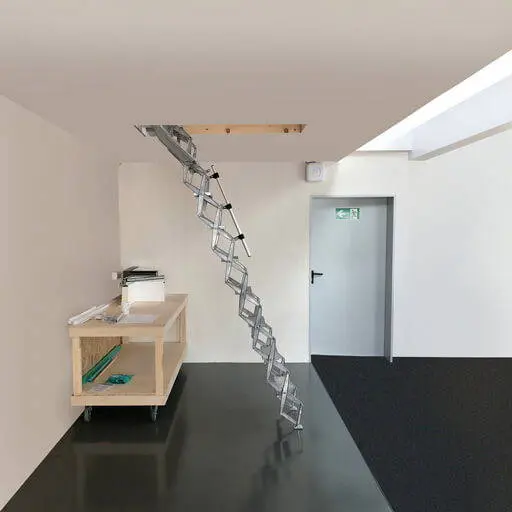The downturn in the UK manufacturing sector took a turn for the worse in July, as rates of contraction in output, new orders and employment all accelerated.
Increasing signs of market weakness also led to cutbacks in purchasing activity and inventory holdings, as manufacturers aimed to protect cash flow and operate on a leaner footing.
The seasonally adjusted S&P Global / CIPS UK Manufacturing Purchasing Managers’ Index (PMI) fell to 45.3 in July, its lowest reading in the year-so-far and joint-weakest since May 2020. The PMI has remained at a sub-50.0 level – signalling a deterioration in operating conditions – in each of the past 12 months.
July saw levels of manufacturing output and incoming new business contract further.

The downturn was widespread by sector, with all three broad product categories covered (consumer, intermediate and investment goods) seeing declines in both variables. Companies linked the downturn to domestic and overseas market weakness, overstocked clients looking to reduce their holdings and efforts among manufacturers to streamline their own operations.
The level of new export business fell for the eighteenth month running and at one of the quickest rates over the past three years. Companies reported that a general weakening of global market conditions was adversely impacting demand from most geographical regions. Manufacturers continued to forecast brighter conditions in future despite the current tough operating environment. Around 53% reported that they expect output to rise over the coming year, with the degree of positive sentiment edging up from June's six-month low.
Confidence was linked to an expected improvement in market conditions, new product launches, planned investment spending and marketing strategies. July saw manufacturing employment reduced for the tenth consecutive month. The rate of job losses accelerated to a seven-month high. Marked cuts were seen at consumer and intermediate goods producers, while job creation in the investment goods category eased to a near standstill pace. Sufficient spare capacity remained to make further steep inroads into backlogs of work, however.
Outstanding business fell for the fifteenth month in a row and to one of the greatest extents during that sequence. Companies linked lower staffing levels to demand weakness, strong competition and efforts to protect margins. These factors also contributed to decreased purchasing activity and efforts to operate with leaner inventory holdings (a number of companies reported being overstocked). Weaker demand for inputs led to a further quickening of average vendor delivery times in July. Supplier performance improved for the sixth month in a row, with lead times shortening in the consumer, intermediate and investment goods sectors.
The extent of the improvement also remained high by the historical standards of the survey, albeit weaker than in recent months. Average input prices fell for the third consecutive month in July, with the rate of decline close to June's 88-month record. A wide range of inputs were reported as down in price by manufacturers, often linked to increased competition between suppliers, weak input demand and lower transportation and energy costs.
July saw little movement in selling prices. Manufacturers reporting an increase cited efforts to recover margins following a period of marked cost inflation. Those seeing a decline mentioned strong competition, weak demand and passing on recent cost reductions.
Rob Dobson, Director at S&P Global Market Intelligence, said: “July saw a deepening of the UK's manufacturing downturn. Output fell at the quickest pace since January, as overstocked clients, rising export losses, higher interest rates and the cost-of-living crisis coalesced to create a worrying intensification of the slump in demand. Although manufacturers maintain a generally positive outlook for the sector, with over half still expecting output to rise over the coming year, other forward-looking indicators show the mire that industry is currently facing. Domestic and export demand are weakening, and backlogs of work are declining sharply, all of which likely presages further cutbacks to production, employment and purchasing in the months ahead.
“The only upside is that prices are falling in this environment of sharply deteriorating demand, with cost pressures also helped lower by further repair to supply chains. Supplier performance improved for the sixth successive month, while raw material prices fell for the third month in a row. However, while good news for inflation, lower prices are largely a symptom of malaise and hence bode ill for manufacturers' profits, which may in turn hit investment.”
Dr John Glen, Chief Economist at the Chartered Institute of Procurement & Supply, said: “The outlook for the manufacturing sector darkened again in July with a sudden fall in output and one of the worst since the pandemic. Manufacturers have registered a reduction in activity in all-bar one month during the past year as new work and employment levels shrank back.
“The lowest orders since last November from overseas customers was particularly surprising, just when signs of improvements in global marketplace activity had started to appear, new work from the Eurozone was subdued just as domestic work dried up.
“Although costs for some materials were still being driven higher by inflationary rises, taking a huge bite out of business cashflow, the cost of many more inputs showed sharp drops on the back of weak demand and more availability as delivery times improved for the sixth consecutive month. This opportunity for price reductions for end consumers may take a few months to filter through as firms ensure a more stable footing for their operations for the second half of 2023.
“Overall, it seems that recovery has stalled. Concerns about further interest rate rises making borrowing more expensive and customers reluctant to buy had the sector running on empty for another month but more than half of survey respondents kept their chins up and remained hopeful about the next 12 months.




















